Henna has long been used for medical and beauty purposes. It is a powder of natural origin, therefore it will not contain harmful substances. The composition is not only a harmless cosmetic product, but also benefits.
Content
- 1 How to choose a quality product?
- 2 Henna varieties
- 3 How to achieve the desired shade?
- 4 Mode of application
- 5 Force Majeure
- 6 Hair care rules before and after the coloring procedure
- 7 Disadvantages of funds
How to choose a quality product?
Henna is a dye that is made from dried leaves of thornless lawsonia collected during its flowering period. They are cut off from the lower branches of the plant, ground and packed in a vacuum, since the coloring matter quickly oxidizes and deteriorates.
Henna can be both colored and colorless, the first is used in the field of beauty, the second is in medicine.
There are several manufacturers of the product: Egypt, Sudan, India, Turkey, Pakistan, China, Nepal, Yemen, Germany, Iran.

Henna is divided into 3 grades:
- The highest is collected and dried in the summer. Contains the highest amount of chlorophyll, which makes its color green. Staining with it is the most persistent.
- Medium - collection and drying takes place in the fall, due to the fact that henna dries slowly, a large amount of chlorophyll is lost. This has a significant impact on quality.
- The lowest - this variety is brown. It is harvested and dried after the rains. In the lowest grade, chlorophyll is absent at all (when buying such a product, you need to be careful, because red and brown can be an indicator that henna is simply spoiled).
When choosing a product, you need to pay attention to its shelf life and conditions. It should be stored in a dry and cool place. And brick-and-mortar stores generally don't follow these rules. Therefore, the best solution would be to order henna in online stores.
Henna varieties
This product is offered on the market in different variations. It can be either in the form of a powder or liquid, of various colors and even colorless.
The tool is widely used not only for coloring hair, but also for eyebrows, and is also used in painting the body (mihendi). The main difference is only the concentration of the product.
Powder is the most popular form for commercially available henna, but liquid is less common. Its consistency is more like a cream, such henna does not need to be diluted and insisted, which greatly facilitates its application, you just need to distribute it through the hair and expect the result.
From the above material, it can be seen that a pure product can be green or brown, differing only in a few tones. If black henna comes across, this indicates the presence of cloves and cocoa beans in the oil, and there are also various chemical elements, which negatively affects the characteristics of the product.
Colorless henna, or transparent, is used for medicinal purposes. It does not give any shades, but it copes well with grease, restores the hair structure, gives shine and volume to curls.
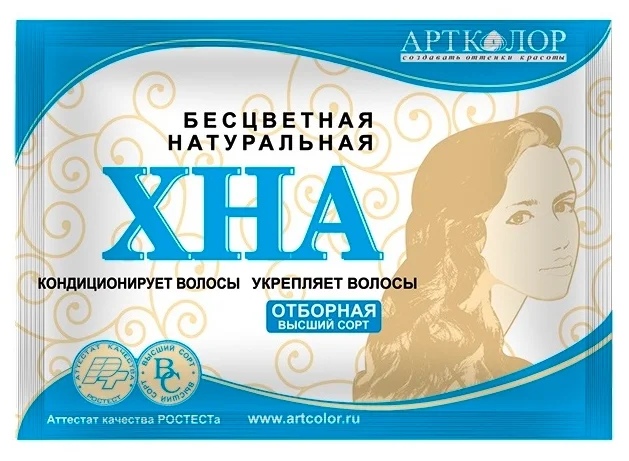
Among all this diversity, one can single out manufacturers that are worth paying attention to when choosing a beauty product.
Indian henna
Henna from India comes in a wide range of shades. Along with the decorative properties of the product, the product gently cares for the hair due to its keratin content. It also has an antiseptic and antifungal effect, prevents hair loss.
The positive effects of henna on hair:
- prevents hair loss;
- relieves dandruff;
- renews hair structure, adds shine and increases its growth rate.
Lady henna
Volume -100 gr. Cost 325 rubles.
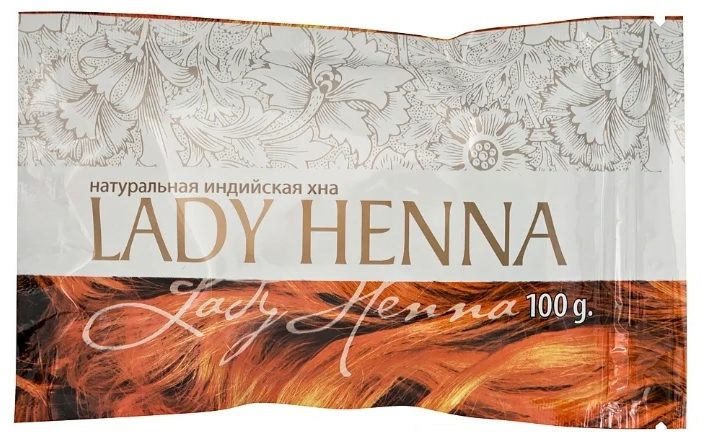
Ingredients: lavsonia, amla extract, fruit powder.
Advantages:
- reddish tint;
- comfortable consistency;
- paints over gray hair.
Disadvantages:
- dries hair;
- high price;
- stains the skin and surfaces.
Aasha
Sterilized, fortified henna.
Volume - 80 gr. Cost - 260 rubles.
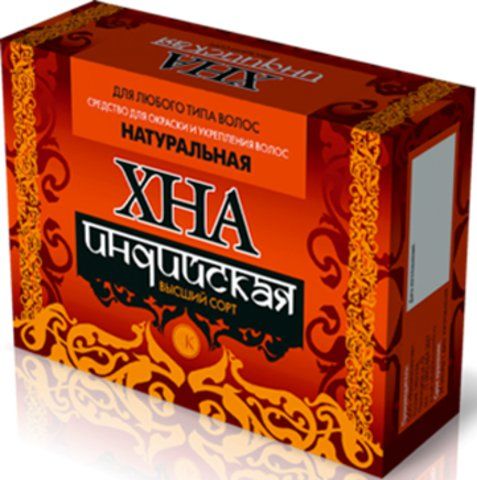
Ingredients: henna, extracts of aloe vera and amla, neem and shikakai.
Advantages:
- fine grinding;
- beautiful shade;
- has a pleasant aroma.
Disadvantages:
- there is a percentage of non-natural ingredients.
Chandi
Henna with a complex of medicinal herbs.
Volume - 100 gr. Cost - 460 rubles.
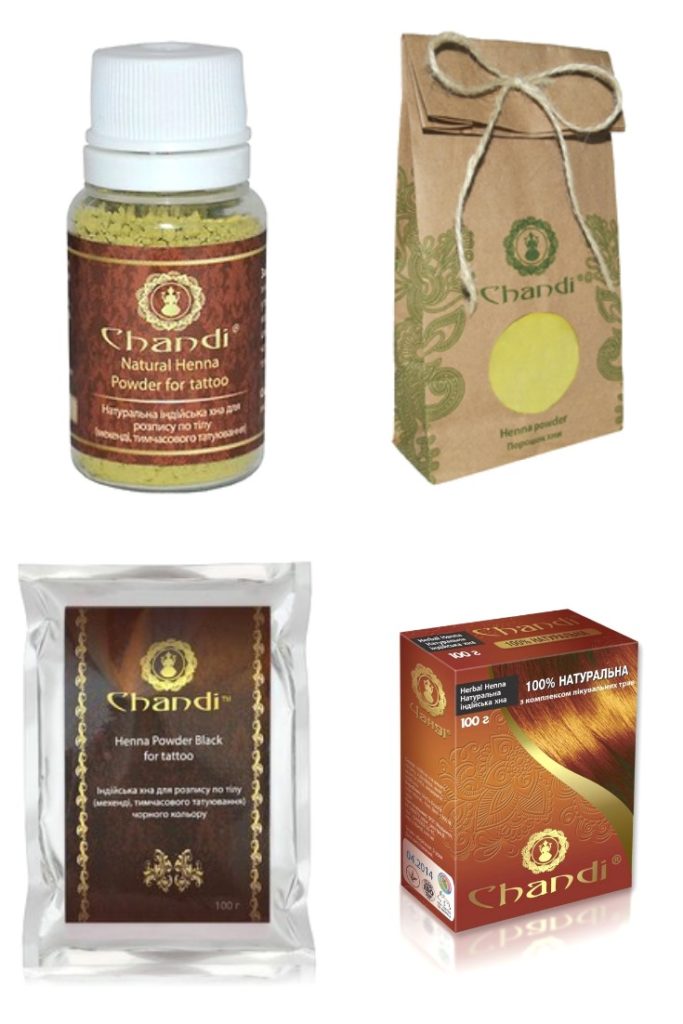
Ingredients: Indian henna of the highest grade, amla, eclipta alba (bringaraj), Indian azadirachta, Asian centella, terminalia chebula (haritaki), terminalia belerika (bibhitaki), jatropha kurkas (Barbados nut), konzina acacia (shikakai).
Advantages:
- rich and bright color;
- simplicity and practicality in application;
- gives shine to hair;
- economical consumption.
Disadvantages:
- can paint over unevenly;
- high price.
Indian henna natural
Henna-based coloring agent.
Volume - 100 gr. Cost - 300 rubles.

Ingredients: henna, amla, bringaraj, asiatic tsintella, haritaki, ibibtaki, danti, shikakai, nim.
Advantages:
- paints over gray hair;
- economical;
- beautiful colour.
Disadvantages:
- insists for a long time;
- dries hair;
- high price.
Volume - 10 g. Cost - 30 rubles.
Ingredients: henna, Ayurvedic herbs.
Advantages:
- strengthens;
- gives shine and volume;
- affordable price;
- eliminate dandruff;
- affordable price.
Disadvantages:
- contains unnatural ingredients;
- dries hair with long use.
Iranian henna
The tool is considered budgetary, unlike, for example, Indian henna. This product has a coarser grind, which makes application more difficult. The palette of shades is limited to copper.
Artcolor
Volume - 125 gr. Cost - 90 rubles.
Ingredients: lavsonium without additives.
Advantages:
- price;
- does not worsen the condition of the hair;
- strengthens the roots.
Disadvantages:
- poorly washed off;
- the result is short-lived;
- slightly tones blonde hair.
Henna with algae "Fucus" Fito
Volume - 25 gr. Cost - 30 rubles.

Ingredients: lavsonia, bladder fucus extract.
Advantages:
- gives shine and volume to hair;
- strengthens the roots;
- affordable price
Disadvantages:
- stains the skin and surfaces;
- liquid consistency;
- difficult to change color;
- poorly washed off.
Henna classic Fito
Volume - 25 gr. Cost - 30 rubles.
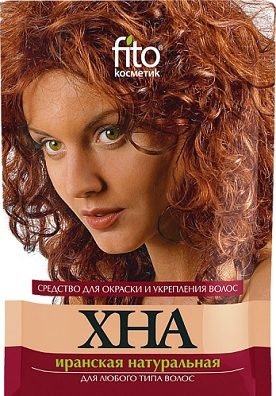
Ingredients: lavsonium without additives.
Advantages:
- gives volume and shine to hair;
- strengthens.
Disadvantages:
- weakly paints.
Egyptian henna
This tool is the softest of the coloring. Henna tints hair rather than dyes it. It is difficult to find her.
Aroma-zone (COLORATION & SOIN CAPILLAIRE HENNÉ D'EGYPTE)
Volume - 250 gr. Cost - 200 rubles.
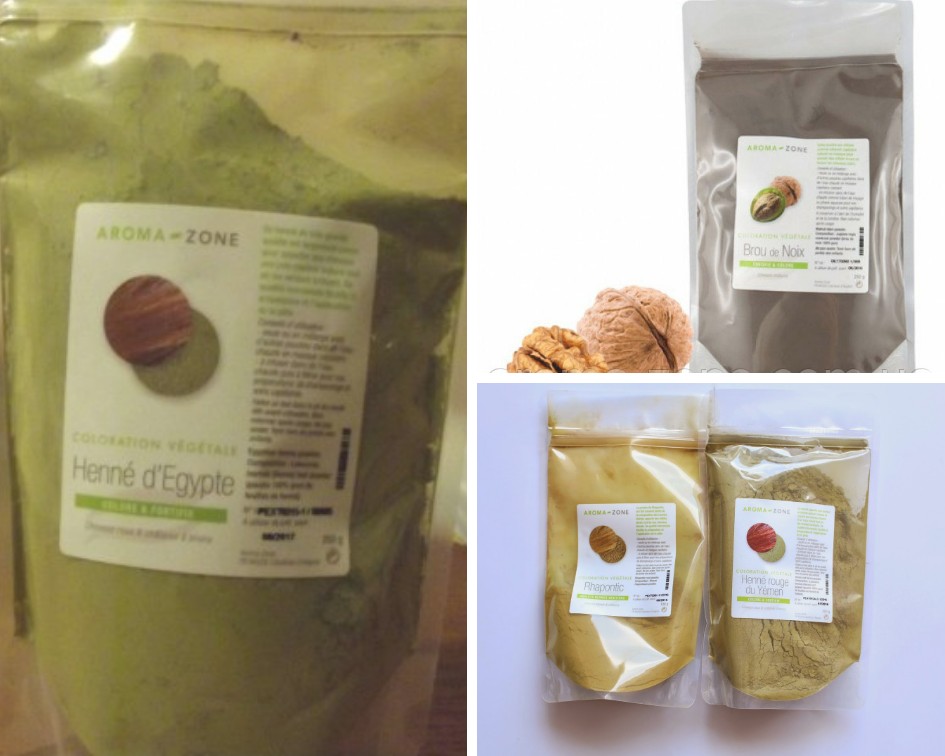
Ingredients: Lavsonia without additives.
Advantages:
- saturated color;
- gives hair shine;
- quality;
- increase hair growth;
- restores hair.
Disadvantages:
- paints the skin;
- not fine grinding;
- laborious cooking process;
- can only be purchased online.
Sudanese henna
Hanmum Tamarind "Tamarind"
Volume - 100 gr. Cost - 385 rubles.
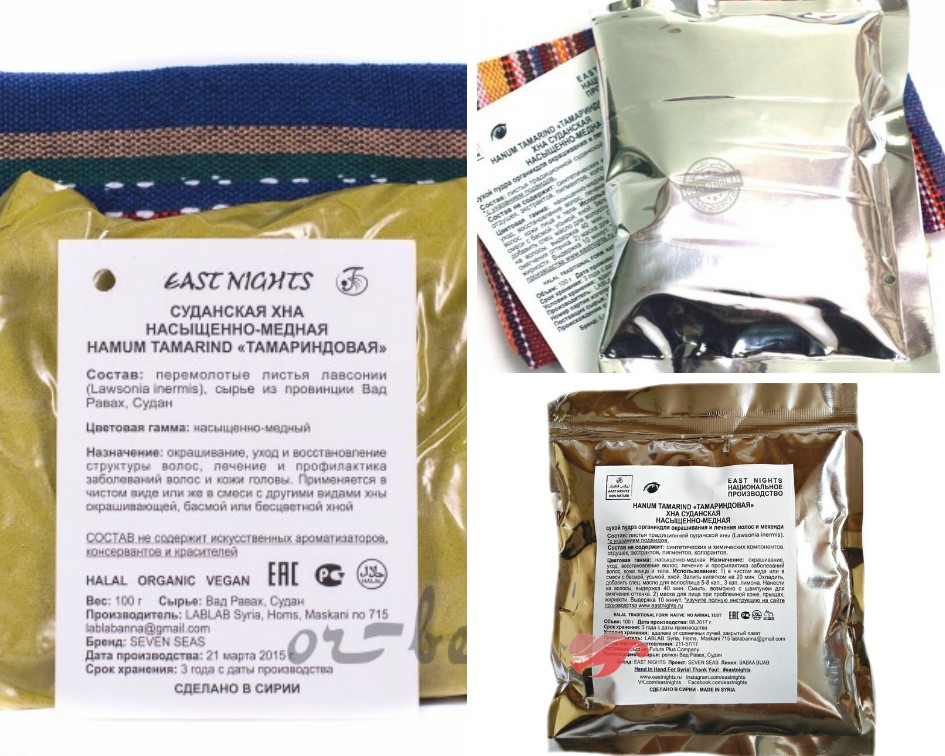
Ingredients: lavsonium without additives.
Advantages:
- beautiful shade;
- paints over gray hair;
- restores and strengthens the hair structure.
Disadvantages:
- difficult to find.
Yemeni henna
Henna differs from Indian and Egyptian in the content of a large amount of coloring pigment. When used, the hair color becomes rich and bright.
Henné Rouge du Yémen Aroma-Zone
Volume -250 gr. Cost - 515 rubles.
Ingredients: lavsonium without additives.
Advantages:
- fine grinding;
- gives hair volume and shine;
- eliminates dandruff.
Disadvantages:
- high price;
- specific smell.
Pakistani henna
Hemani with a rose
Volume - 150 gr. Cost - 350 rubles.
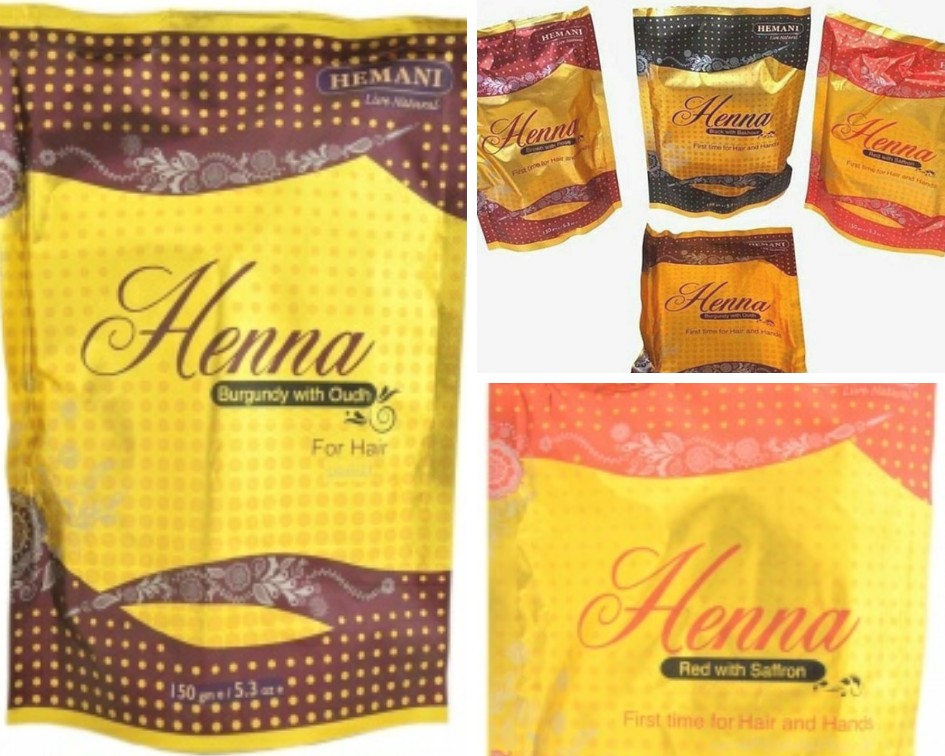
Composition: lavsonia, blunt-leaved cassia, rose.
Advantages:
- price;
- fine grinding;
- beautiful shade;
- gives shine to hair;
- economical consumption;
- easy to apply.
Disadvantages:
- stains the skin and surfaces;
- no zip clasp.
Mohammad Hashim Tajir Surma Hashmi
Volume - 100 gr. Cost - 200 rubles.
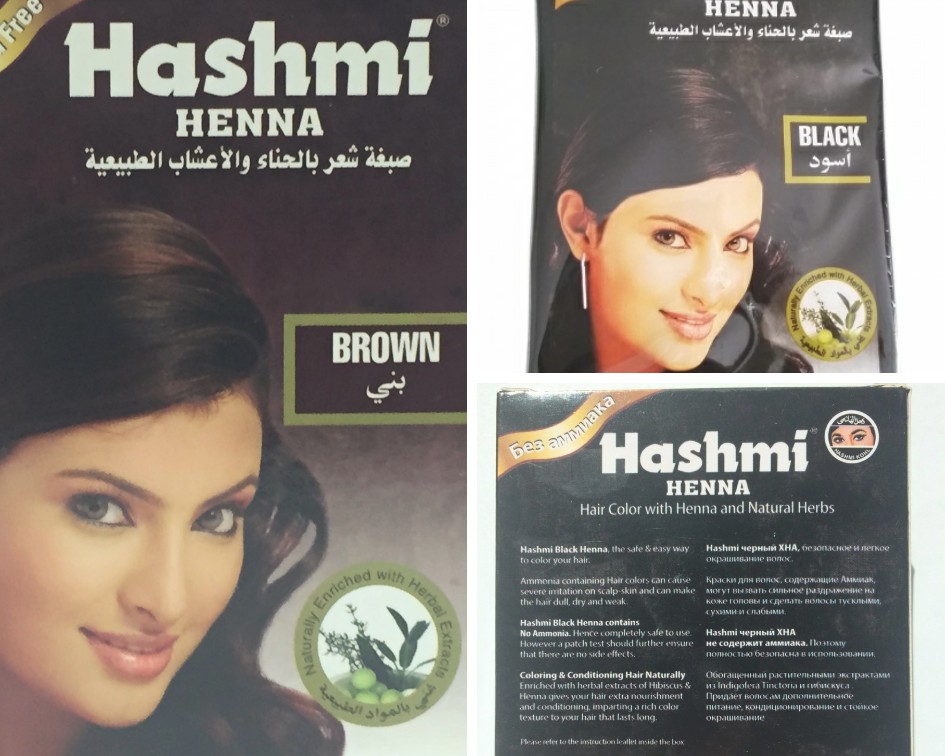
Ingredients: lavsonium, tartaric acid, indigo dye, hibiscus.
Advantages:
- color fastness;
- easy to apply, does not flow;
- profitability;
- saturated pigment.
Disadvantages:
- poorly washed off;
- stains the skin;
- difficult to find on sale;
- contains Para aminophenol and p-phenylenediamine — quite harmful synthetic substances.
German henna
Sante pflanzenhaarfarbe henna
Volume - 100 gr. Cost - 375 rubles.
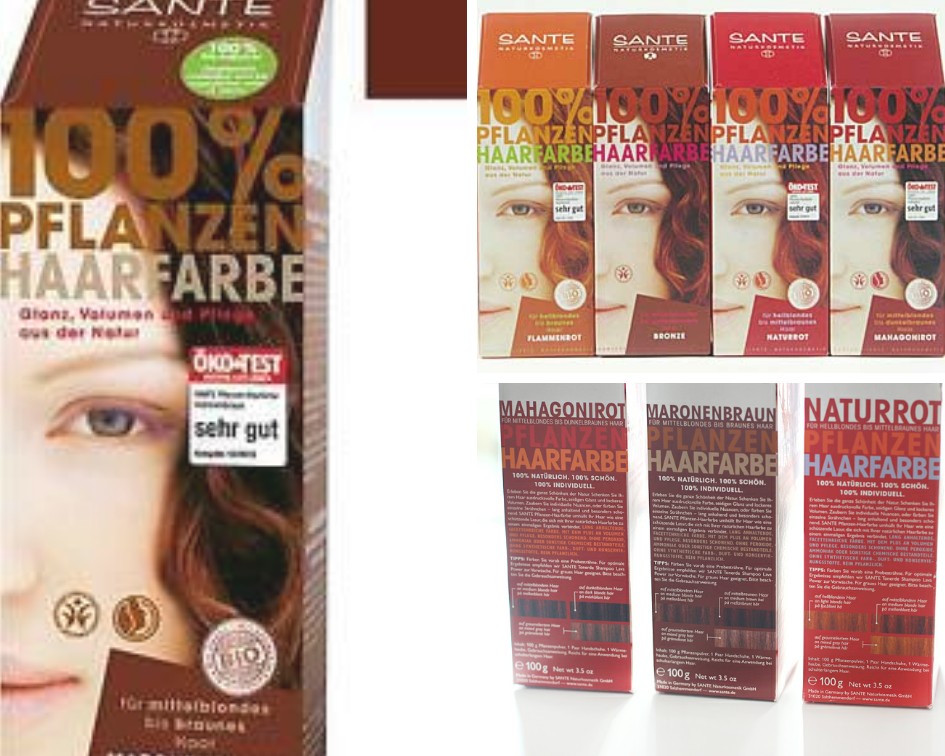
Ingredients: lavsonia, beetroot extract, walnut extract, indigo, maltodextrin, betaine, algin.
Advantages:
- nice smell;
- soothes the scalp, eliminates dandruff;
- gives shine and volume to hair;
- persistent color.
Disadvantages:
- difficult to find;
- dull shade
- high price.
As a result, Iranian henna can be singled out as the most budgetary, however, if you worry about the health of your hair and scalp, then you should give preference to Iranian. You cannot save on your health.
How to achieve the desired shade?
All henna is made from the same plant, but it is grown in different places, and this affects the content of the coloring pigment in it. For example, Egyptian henna has a soft copper hue, while Indian or Yemeni is brighter, closer to red.
Everyone knows that henna cannot be of all colors of the rainbow, like permanent hair dyes. That is why, to achieve the desired effect, henna can be mixed in various proportions with other components.
- Lavsonia gives brown or black color in combination with basma or indigofer dye. The result depends on the percentage of ingredients.
- Also, in order to shade the curls with brown, you can use a mixture of henna and walnut leaves (its green shell), coffee or acacia catechu. Acacia gives brown and dark brown hues.
- There are options for blonde hair lovers too. For example, you can use saffron or chamomile. They give a golden hue. However, the interaction with chamomile is not very effective, the color is unstable and quickly washed out.
- Beetroot or cocoa can give a beautiful red hue, which will emphasize individuality. Madder and hibiscus contribute to the enhancement of this shade.
- A rich golden yellow hue is obtained from a mixture of rhubarb or turmeric stems.
- Shikakai, when interacting with henna, gives the hair darker shades.
Mode of application
To achieve the desired result, henna must be able to properly brew, apply and rinse off.
- To begin with, the product must be poured with hot water, but not boiling water, otherwise it will lose its properties.
- Stir until smooth, without lumps. The container and the spoon used to mix the product must not be metal.
- Then, the resulting mixture should be infused for a while. Typically, this takes from 30 minutes to several hours. The longer henna is infused, the more pigmented it will be.
- Hair should be washed and towel dried before application. After that, distribute the product along the length of the hair and leave for some time, depending on how rich the shade needs to be purchased.
- Henna is washed off after the procedure with plain water, without shampoos and balms.
Frequent use of henna can cause hair to become dry and brittle. Therefore, a small amount of oil or balm can be added to the mixture, which will soften the effect of the product, moisturize the hair and scalp.
If, after dyeing, the color turns out to be too saturated, it can be muted with heated vegetable oil, which should be thoroughly rubbed into the hair, dried with a hairdryer, and then washed off with shampoo. After some time, the procedure can be repeated.
Sometimes, the structure of the hair and the characteristics of the body do not allow the pigment to penetrate and shade the hair. In this case, you can resort to using special henna for body art. It is identical to the usual remedy, but more intense.
Force Majeure
It happens that some situations are beyond our control, henna can also live its own life. For example, after non-compliance with the storage conditions on the store counter or if you ignore the cooking instructions, the tone may differ from the declared one.
The pigment is very difficult to remove and the washing procedure will need to be carried out several times.
There are several ways to get rid of the unwanted result:
- Oil.
Apply pre-warmed olive oil to your hair and distribute it through your hair. Then, you need to put on a hat, and warm it on top with a towel and leave it for a while. It is advisable to keep such a mask for at least 2 hours, then wash off with shampoo.
- Alcohol.
The procedure requires 70% alcohol. It must be applied to the hair and left for 5 minutes, after which the alcohol is washed off, and instead of it, oil is distributed through the hair, which eliminates unwanted pigment. To enhance the impact. The head should be wrapped in a towel and warmed up with a hairdryer. After half an hour, the mask can be washed off with a shampoo for oily hair.
- Sour cream.
The product must be sour. It must be distributed through the hair, put on a hat and leave for an hour. It will not completely get rid of the color, but it will muffle it.
- Soap.
Laundry soap combined with oil will help wash out unwanted shades. But you will need to be patient, because you will need to rinse off within a month.
- Kefir and yeast.
The method will take several days. It is necessary to mix kefir and yeast until smooth, which should then be applied to the hair. The mixture is washed off the head after at least 2 hours.
- Vinegar.
Vinegar must be mixed with water. Approximate proportion: 3 tablespoons of vinegar to 5 liters of water. After that, the hair must be kept in the solution for 10 minutes and washed off with regular shampoo. In order not to damage the hair, a balm is used.
Hair care rules before and after the coloring procedure
- Before dyeing with henna, do not expose hair to chemical attack. It is forbidden to use permanent dyes and perm.
- In order to paint over the gray hair, it is necessary to add basma to the henna mixture, which will help tint unwanted areas.
- The optimal interval of use is once a month. This will prevent your hair from drying out.
- If there is a goal of simple hair improvement, then you should turn to colorless henna.
- After the procedure, do not forget about hair restoration complexes. To achieve fullness, you can use various masks and balms.
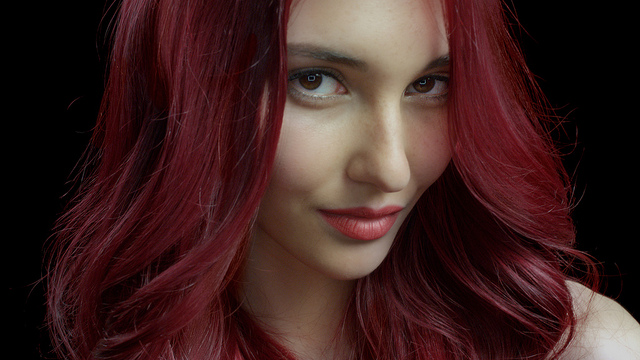
Disadvantages of funds
Henna has many benefits, but it also has several disadvantages. For instance:
- With frequent use, both budget and expensive henna dries the hair and scalp. Accordingly, the hair becomes brittle, dull and begins to fall out.
- When perming, the product cannot be used, as it will straighten the curls.
- Henna is incompatible with other coloring products. If the experiment with henna is unsuccessful, the hair cannot be painted over with regular permanent paint. Either there will be no effect at all, as henna envelops the hair, preventing other pigments from penetrating inside, or it will lead to unexpected results, the color of which can be upsetting (for example, a green tint may appear).
- Henna, like any other product, is not hypoallergenic. But the reaction to it or to other components that are included in the composition is fashionable to identify only during the staining process.
Choosing the right henna for your hair will allow you to achieve a positive impact, a visual and healing effect.












